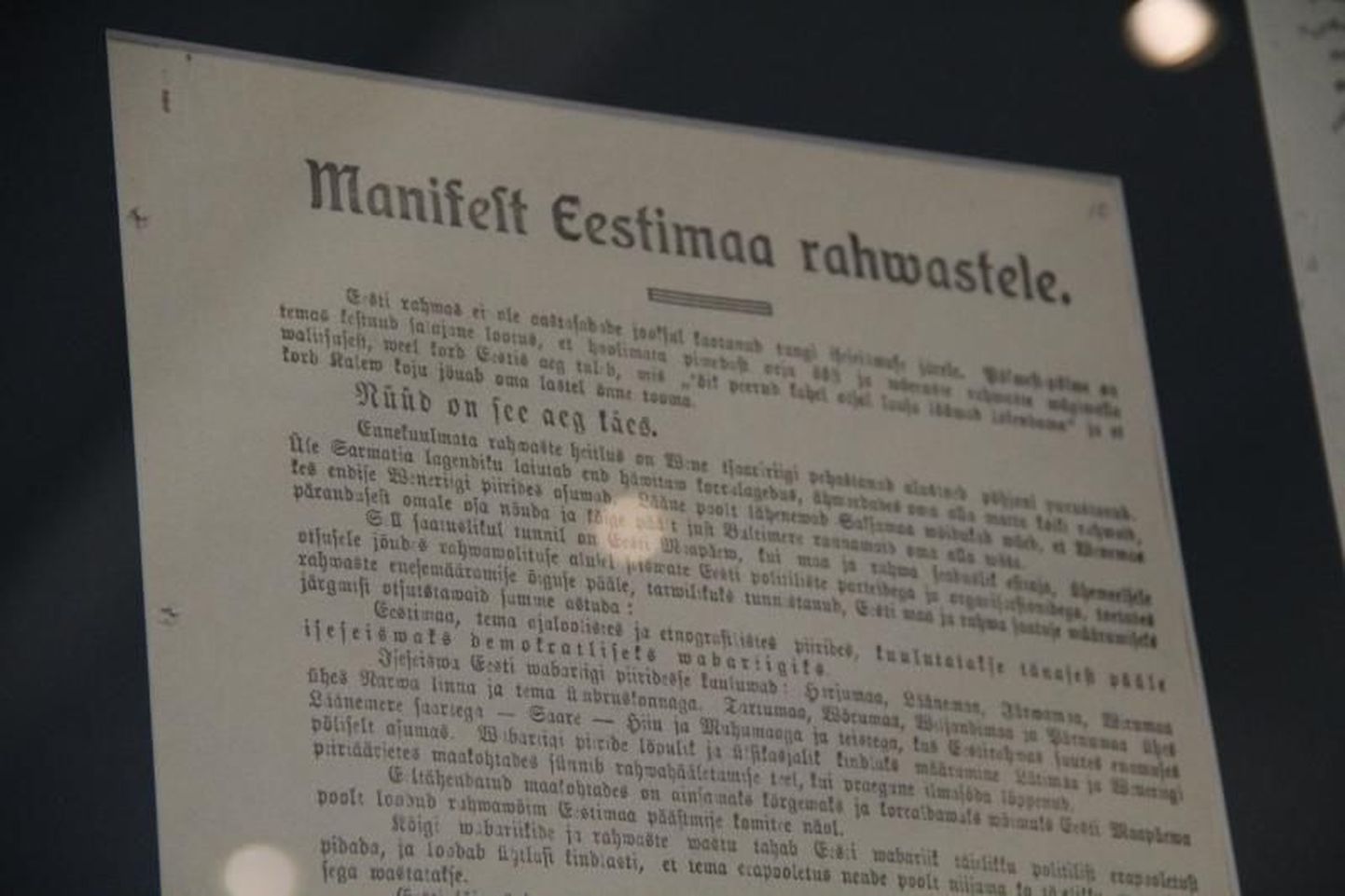Juhan Kukk wrote the draft by hand on three loose-leaf sheets of paper and made corrections and changes to them. The handwritten rough draft shows a number of deletions and additions, rewordings of a few sentences; even a few paragraphs have been rewritten. The final draft incorporating these changes was approved on 21 February.
The Declaration of Independence was published for the first time on 23 February in Pärnu. During that day, the declaration was printed, posted on public bulletin boards and walls and distributed across the county. That evening at 20:00, a member of the Estonian Province Assembly, the advocate Hugo Kuusner, read the declaration to the people assembled at the Endla Society’s house.
Although German forces occupied all of Estonia in March, thanks to the publication of the manifesto, the independent country was de jure in existence and in November 1918, following the defeat of the German Emperor in World War I, the development of Estonian statehood could continue.
